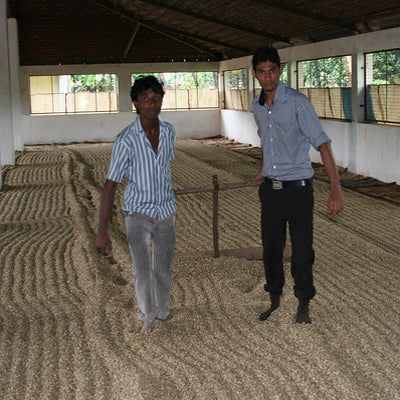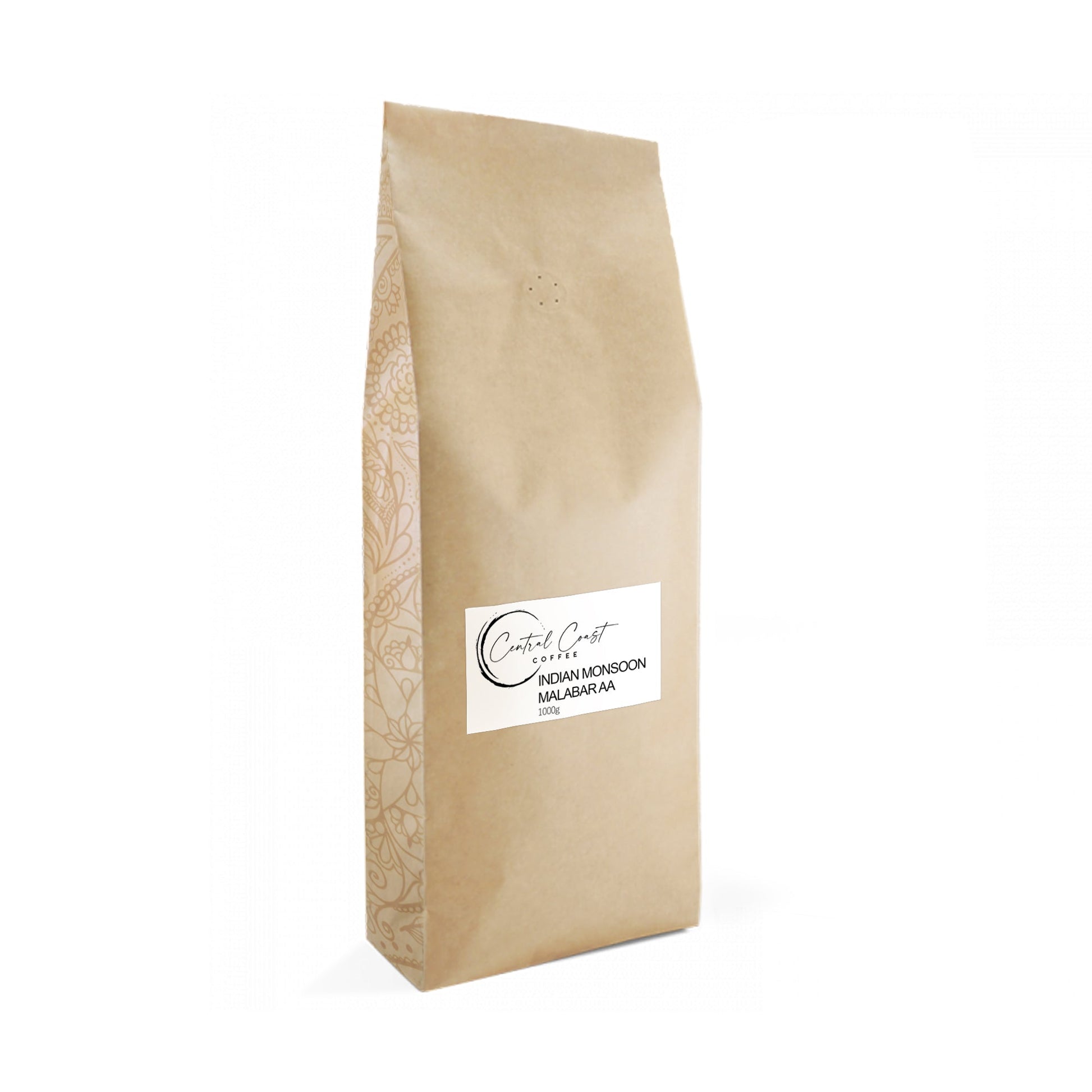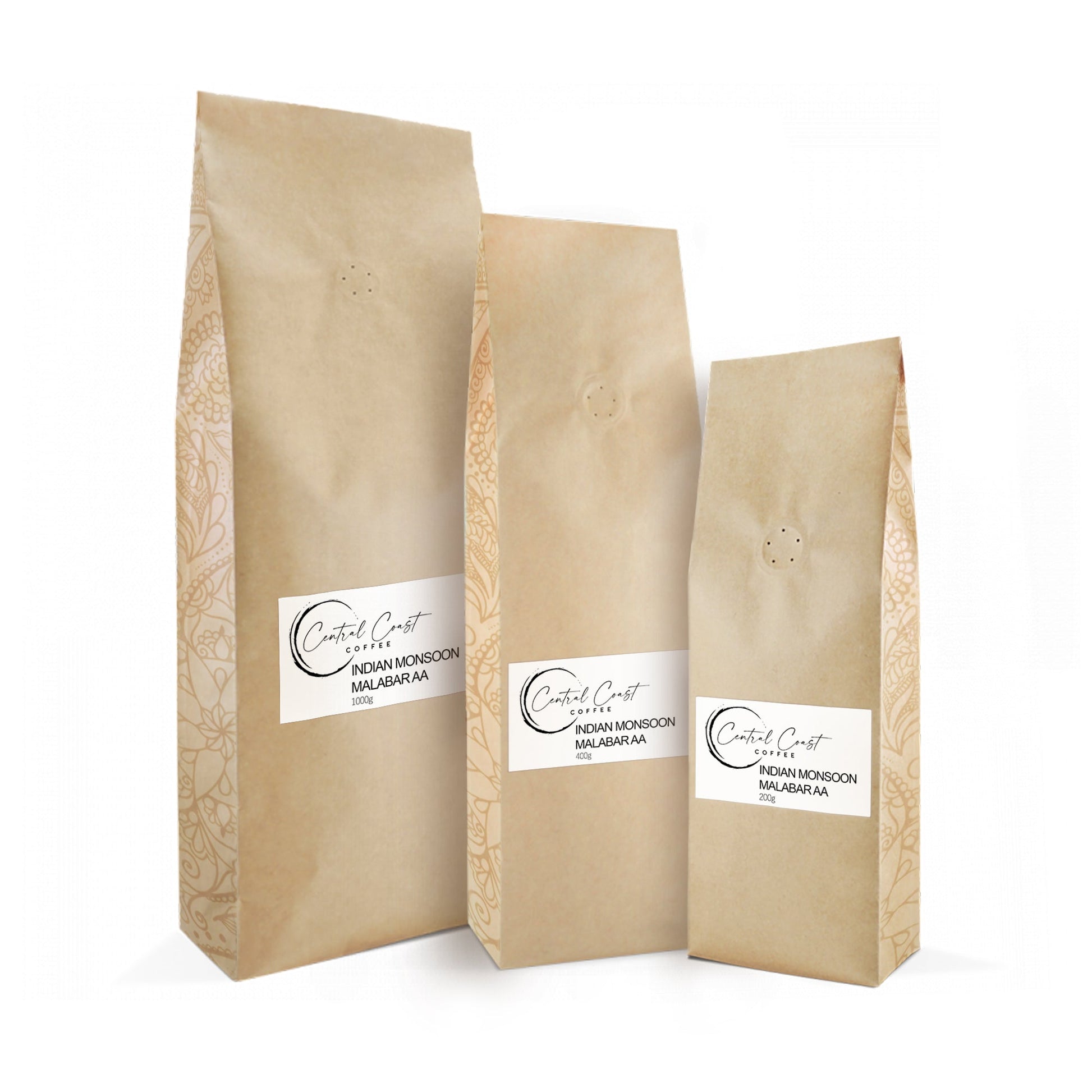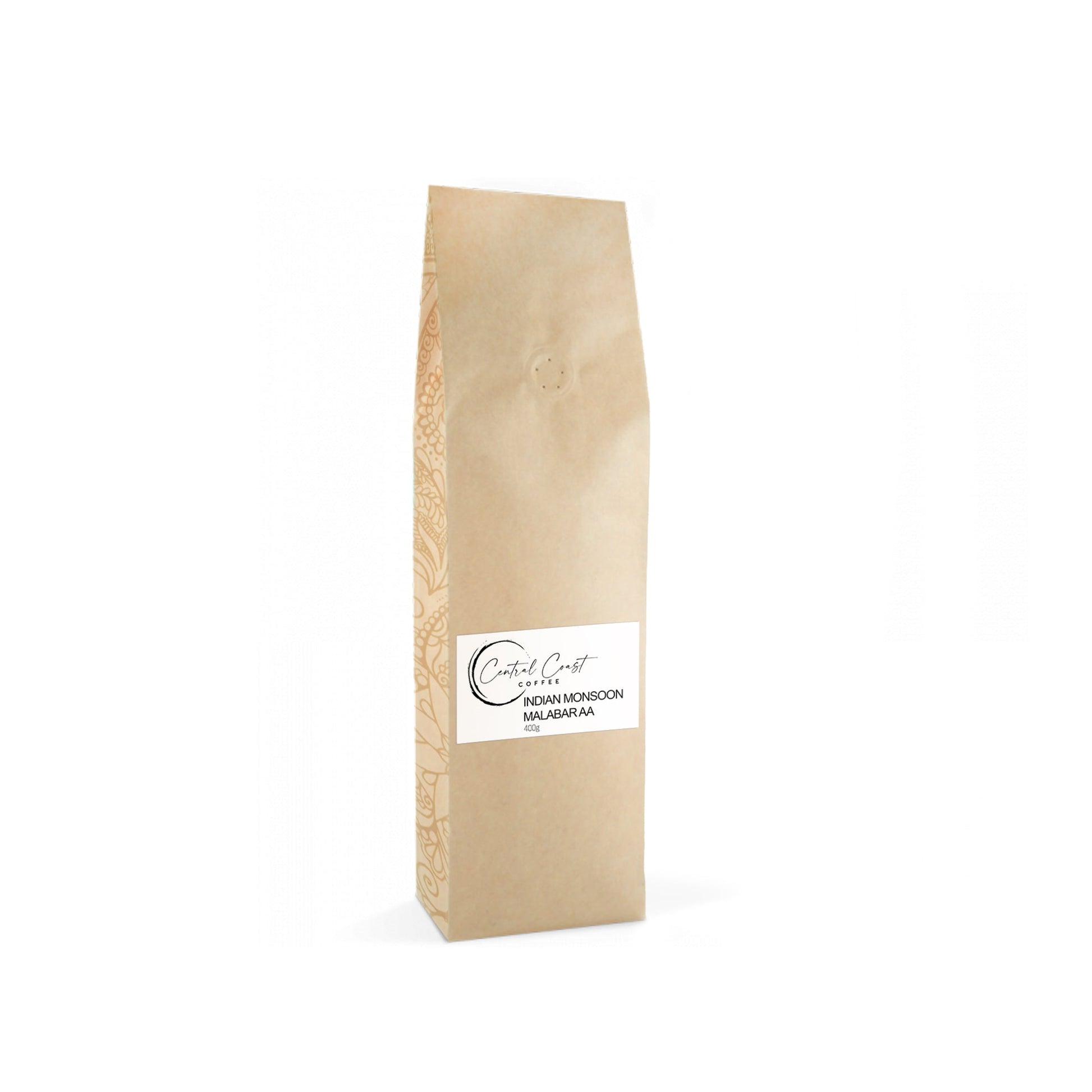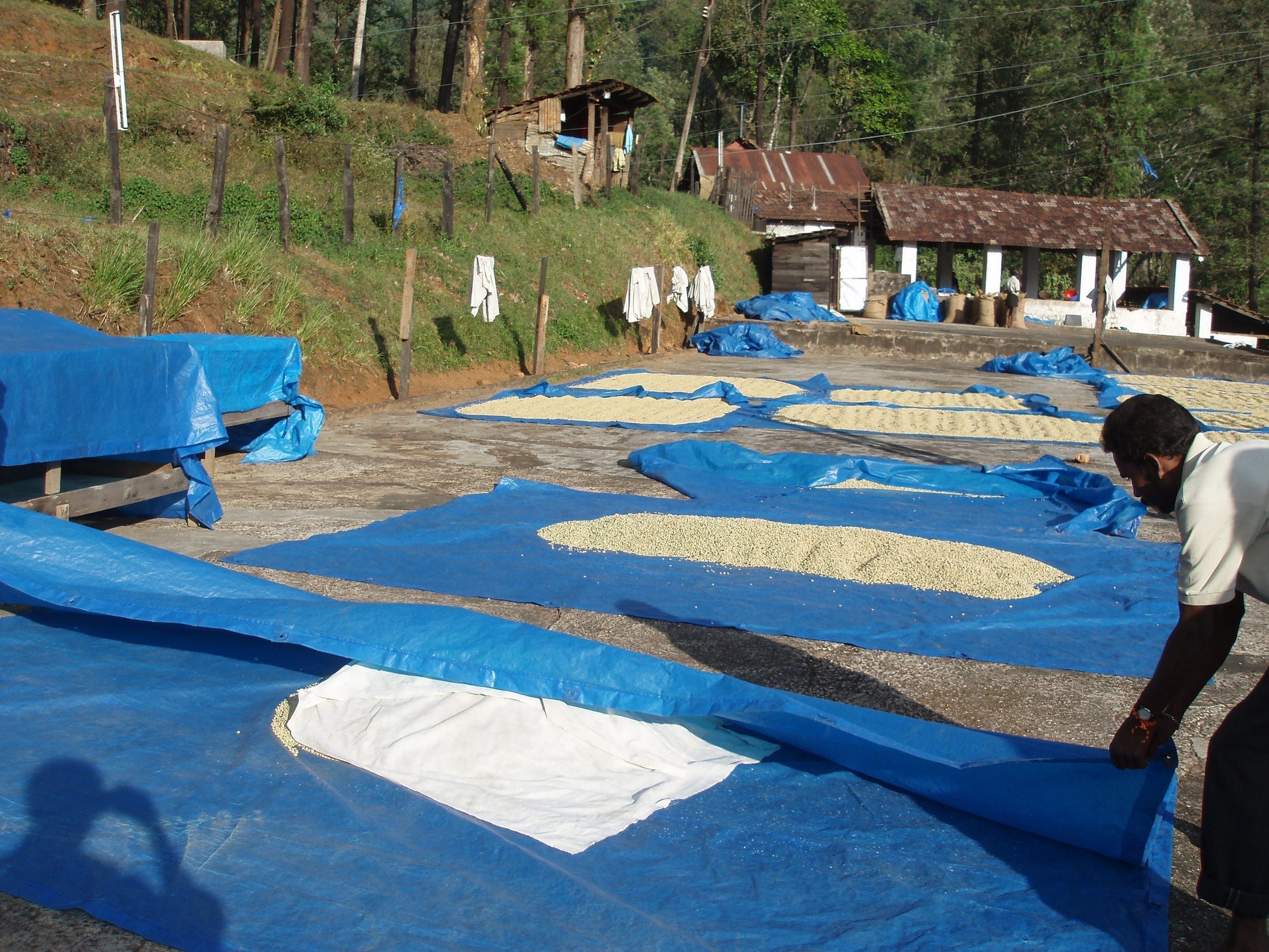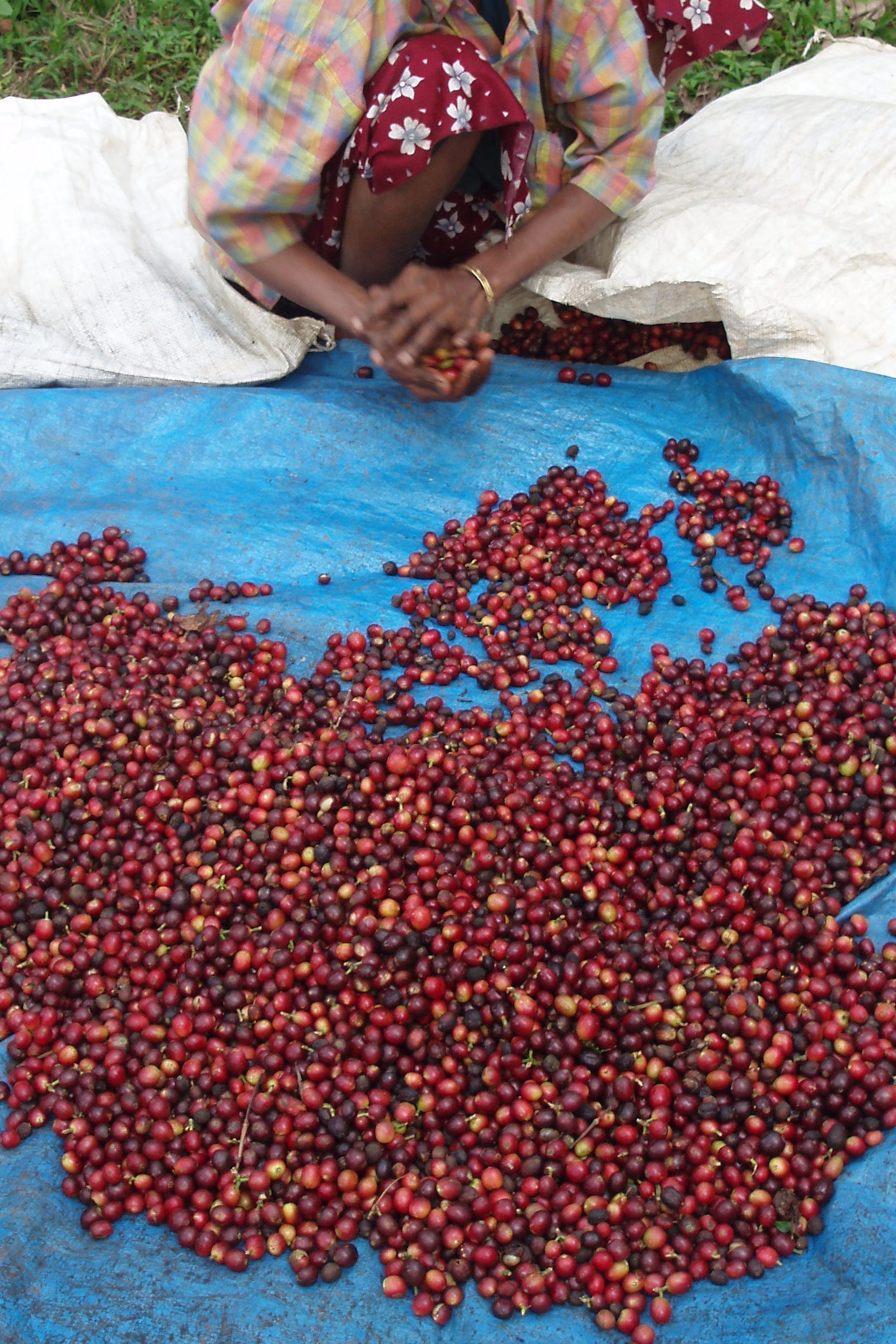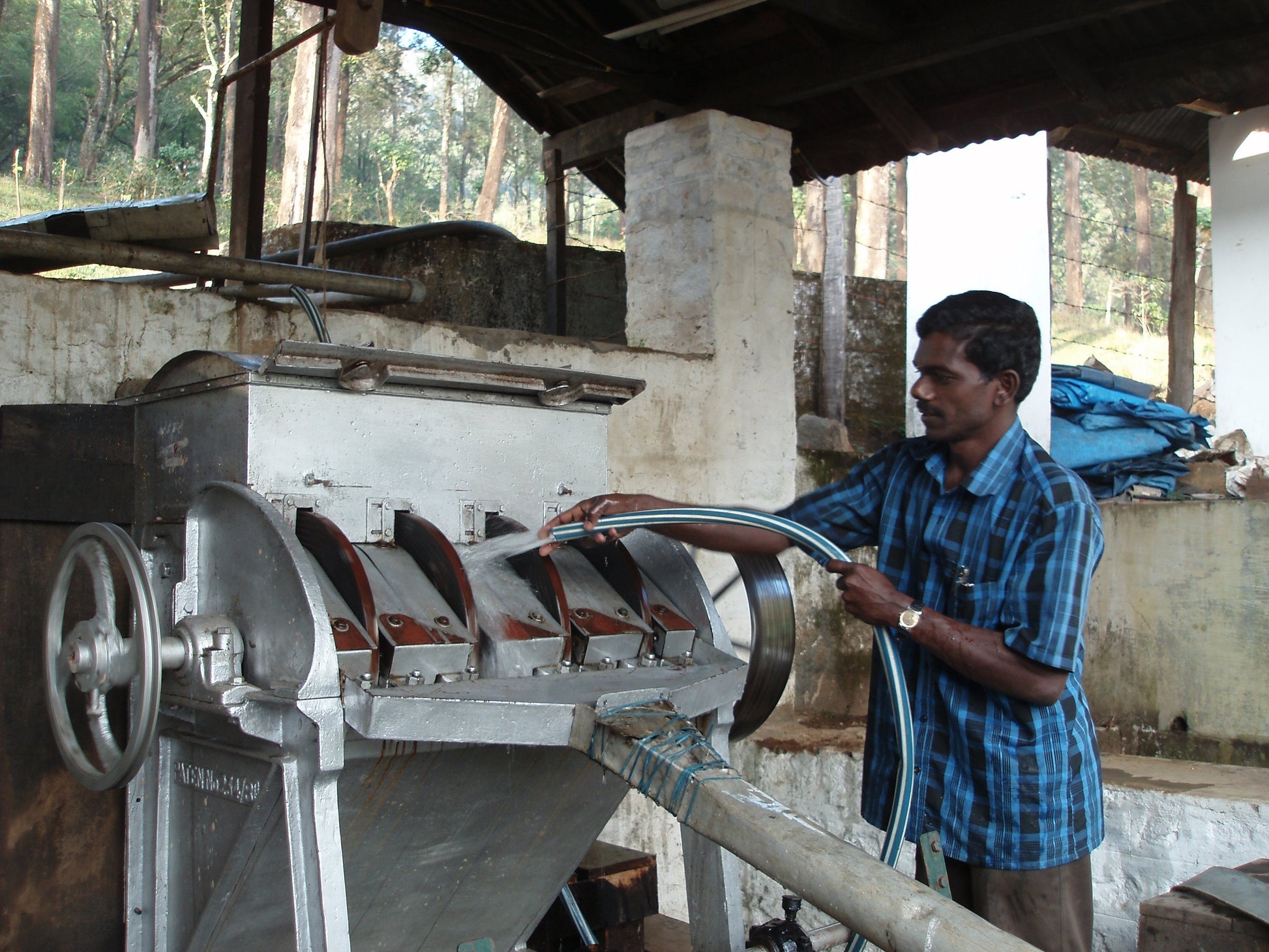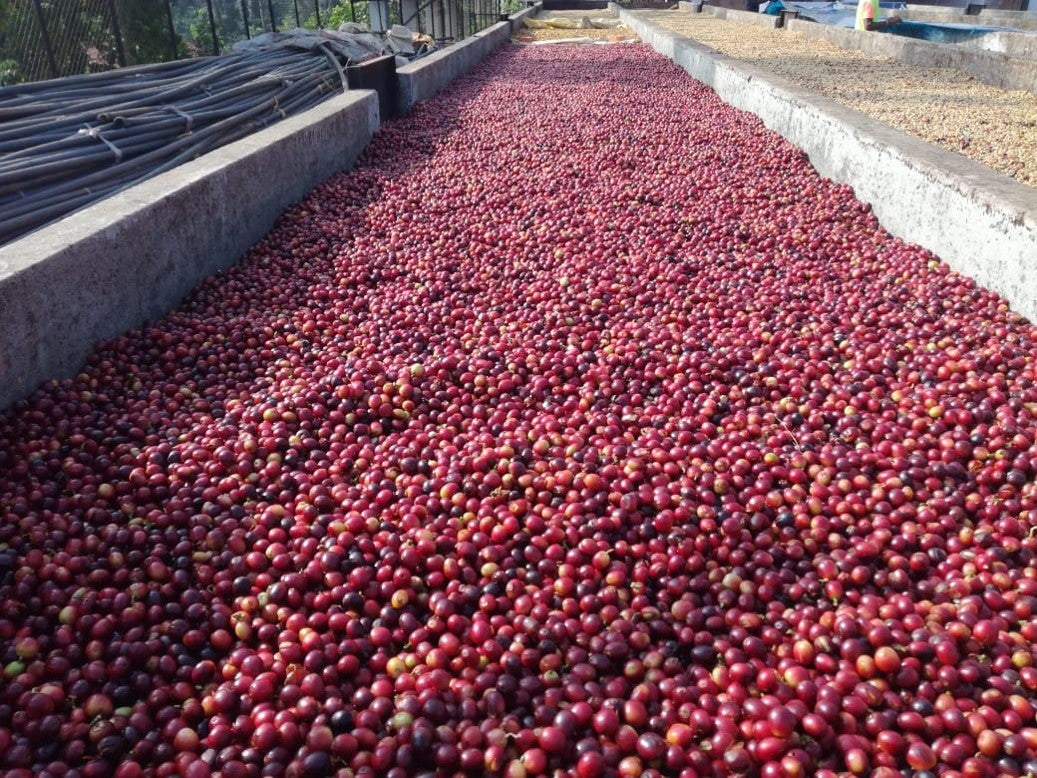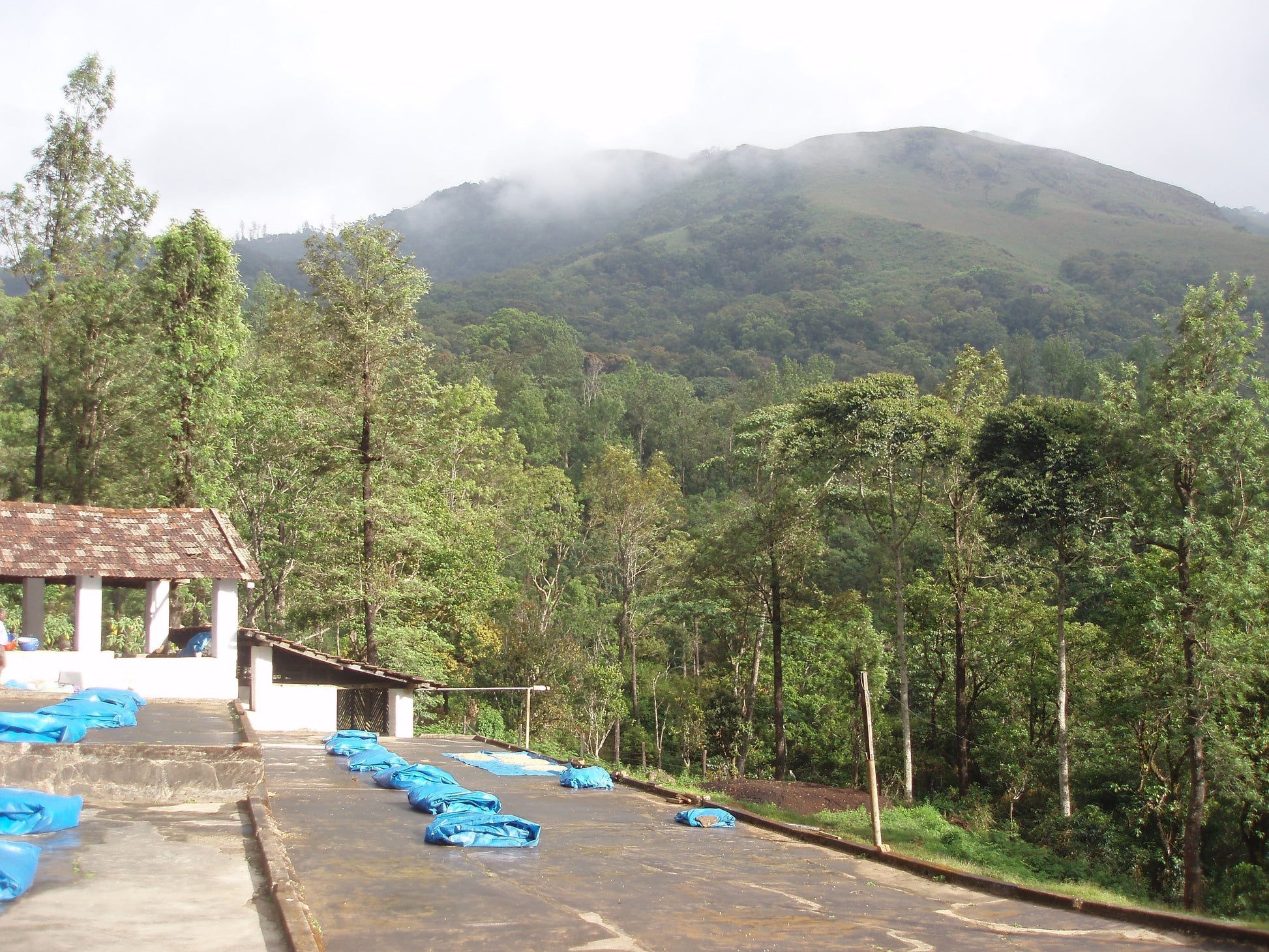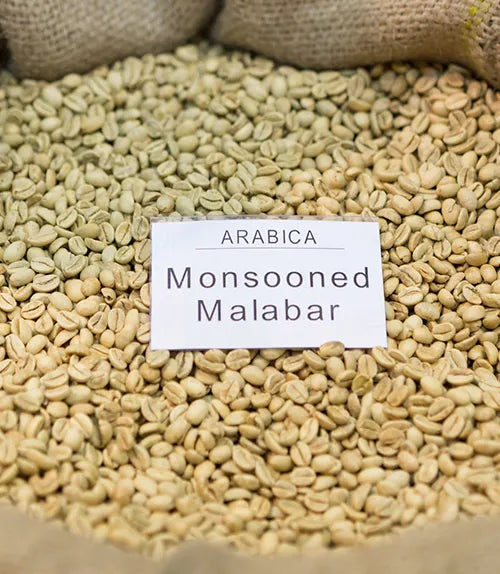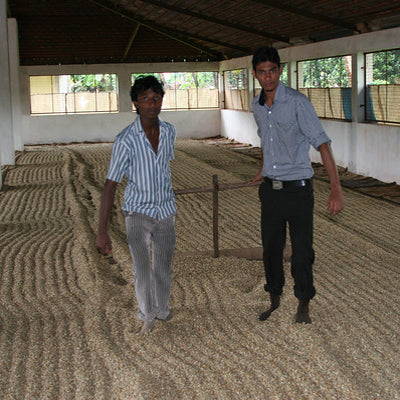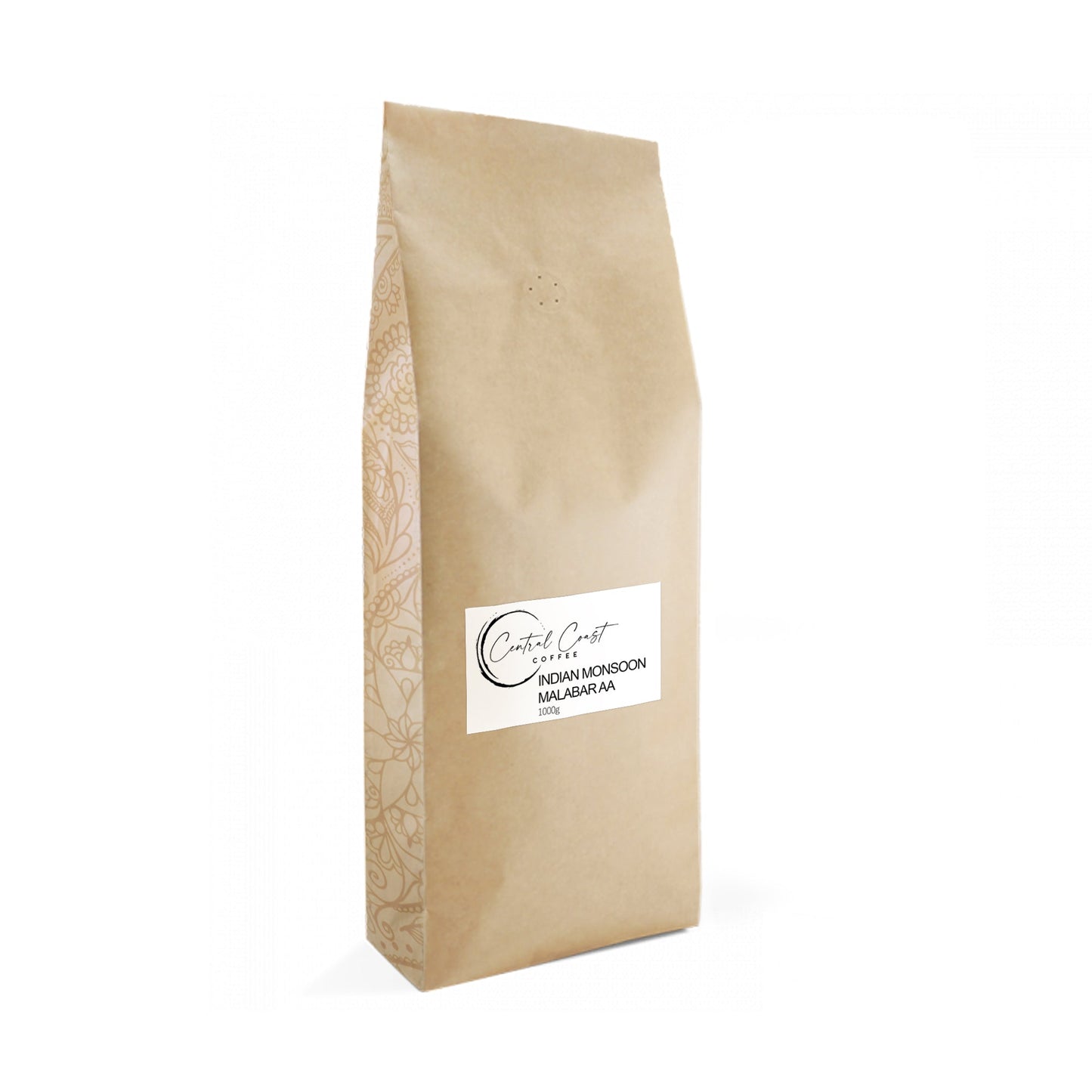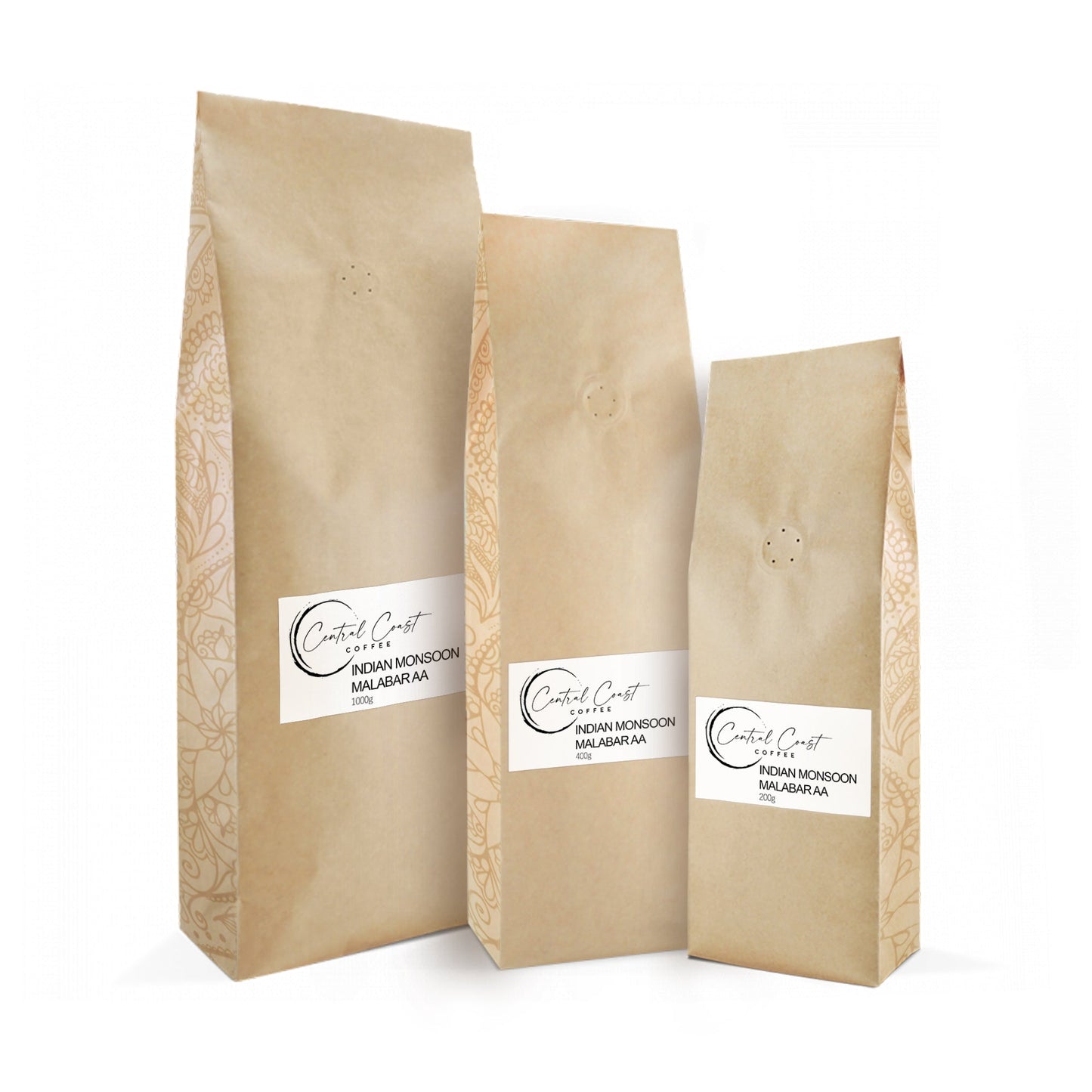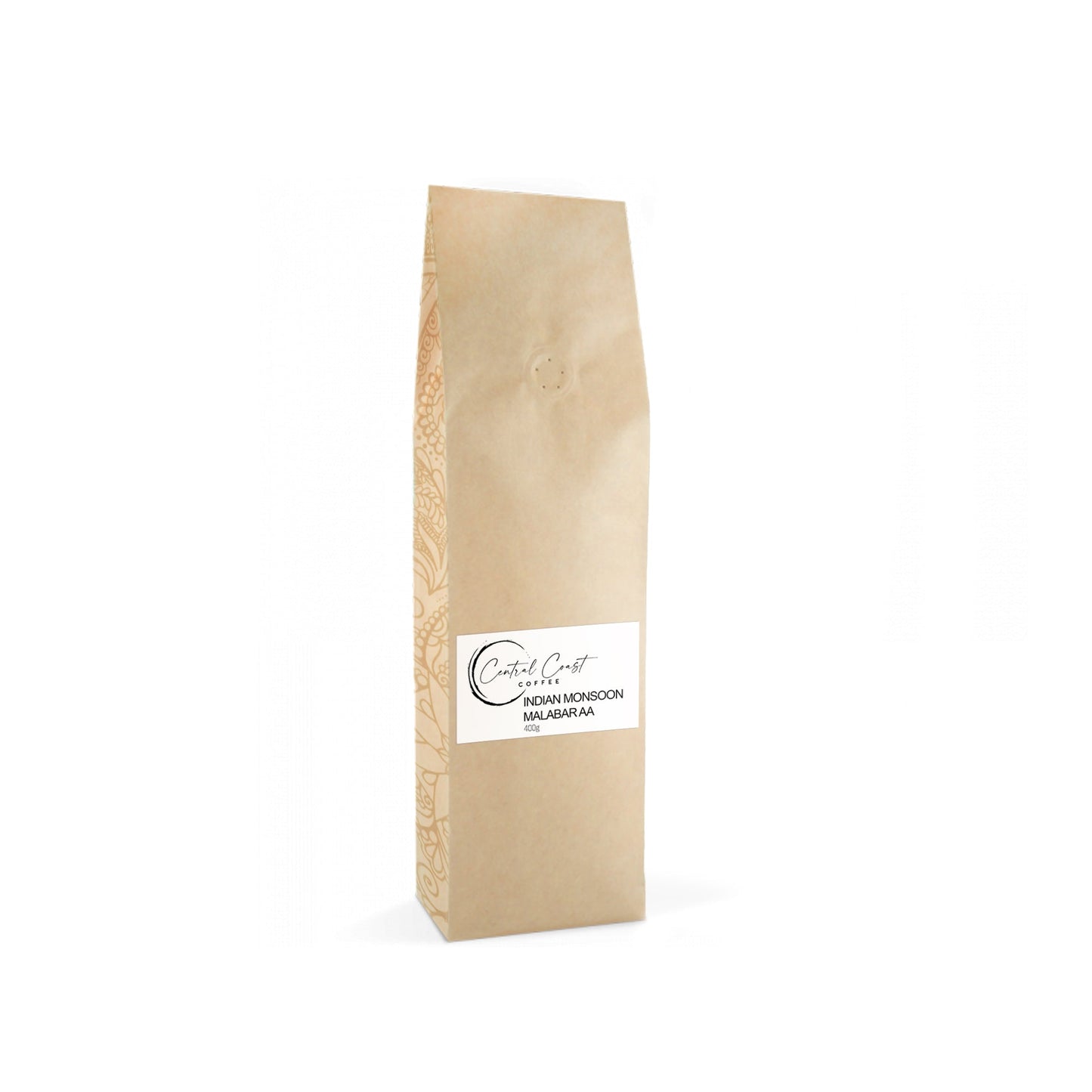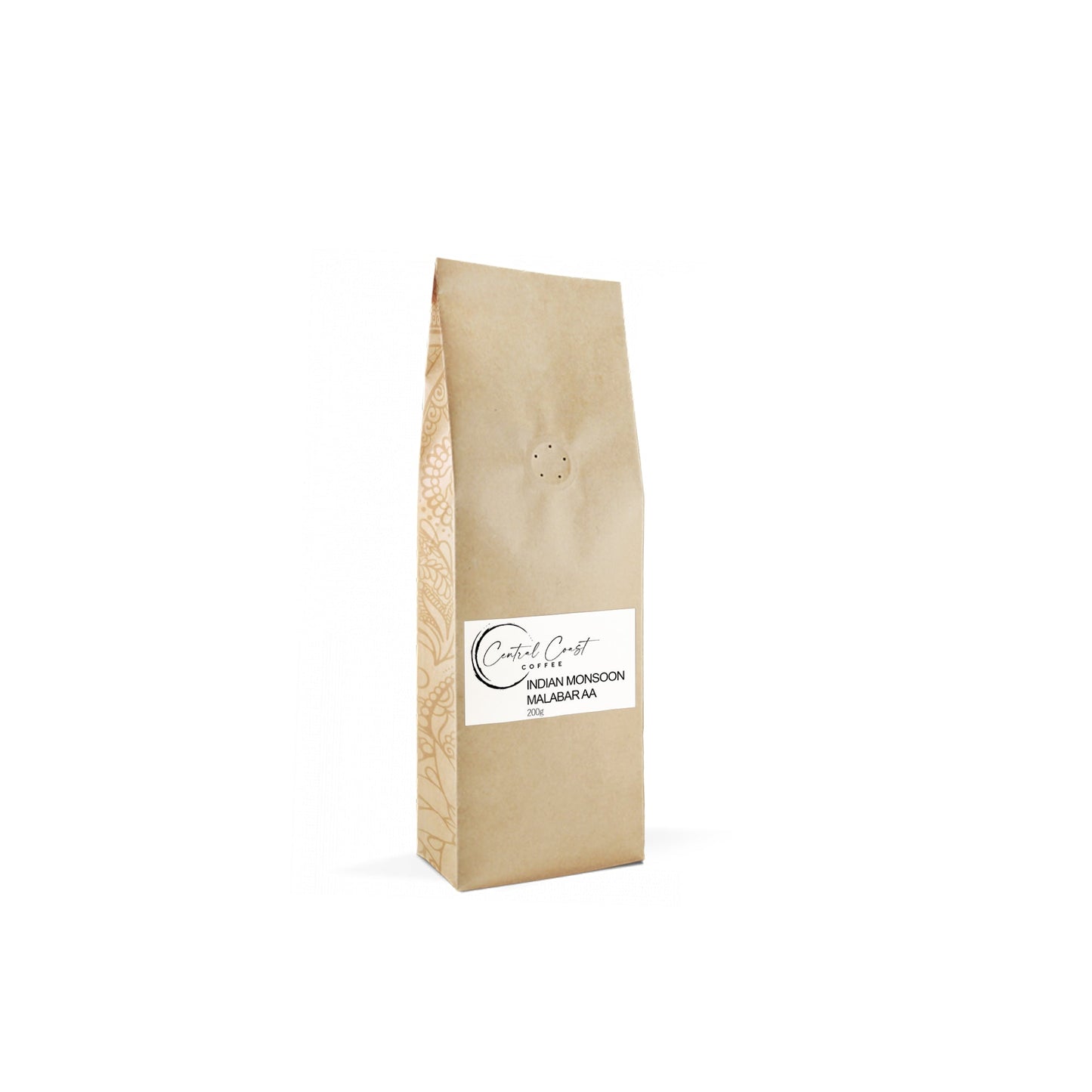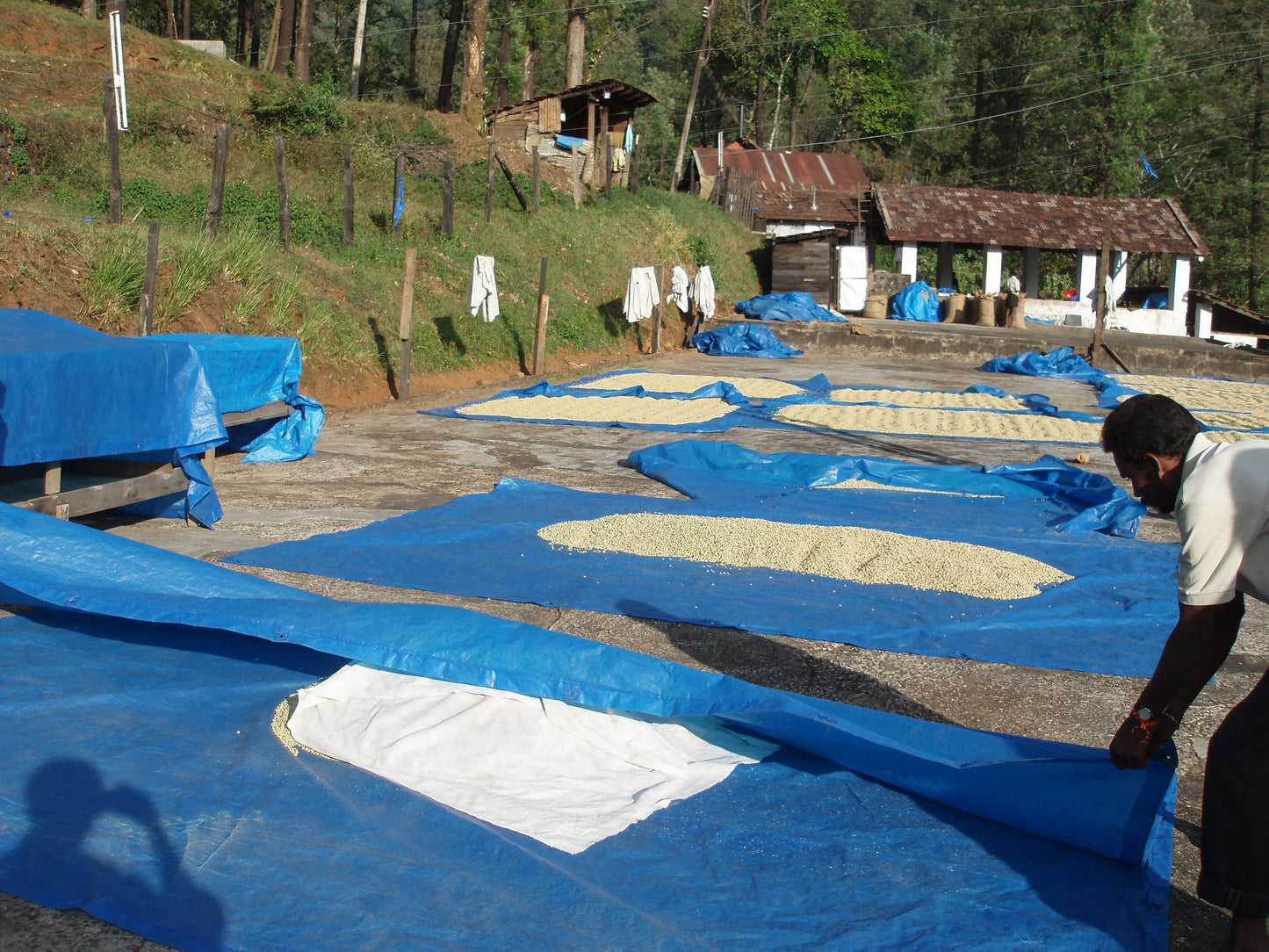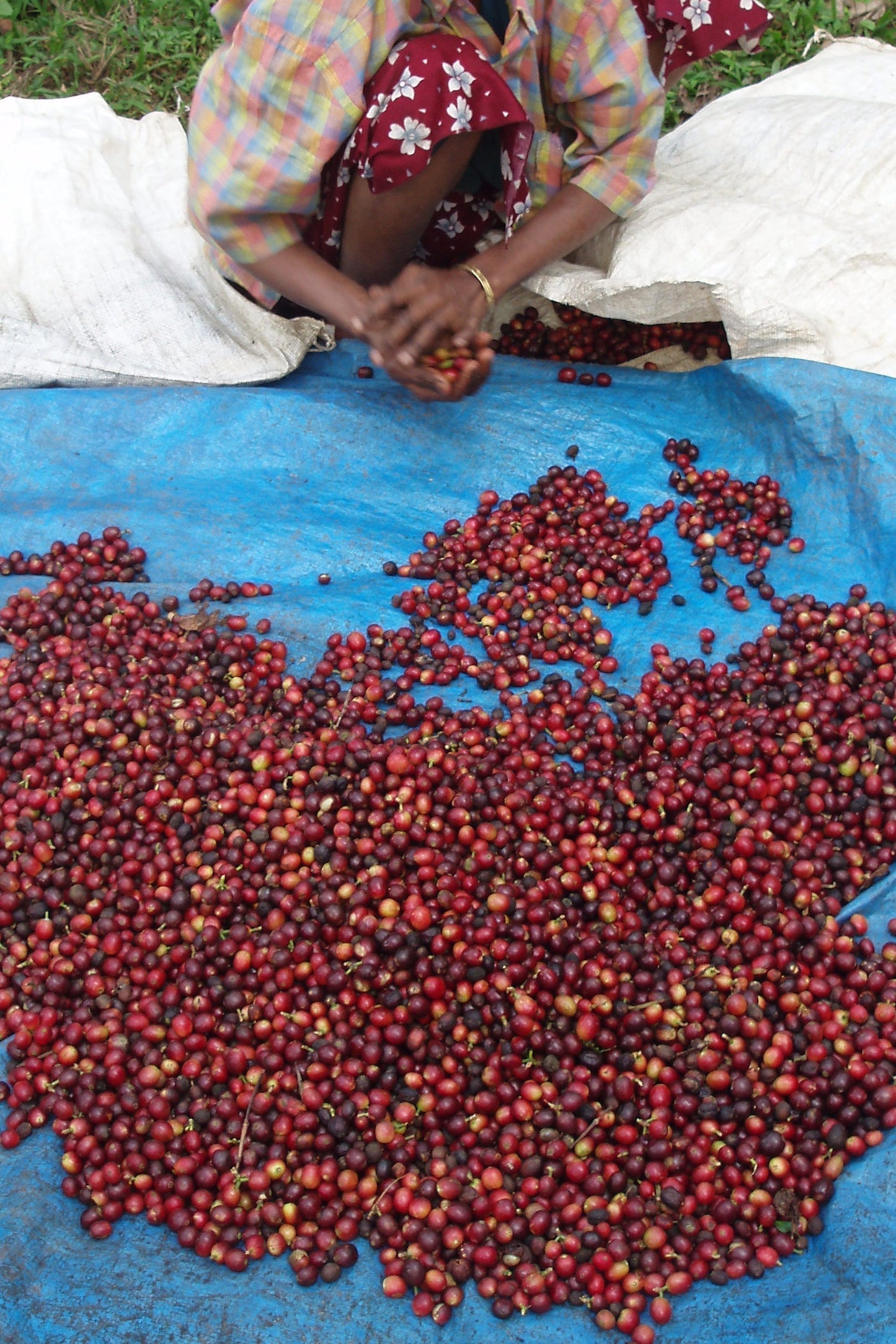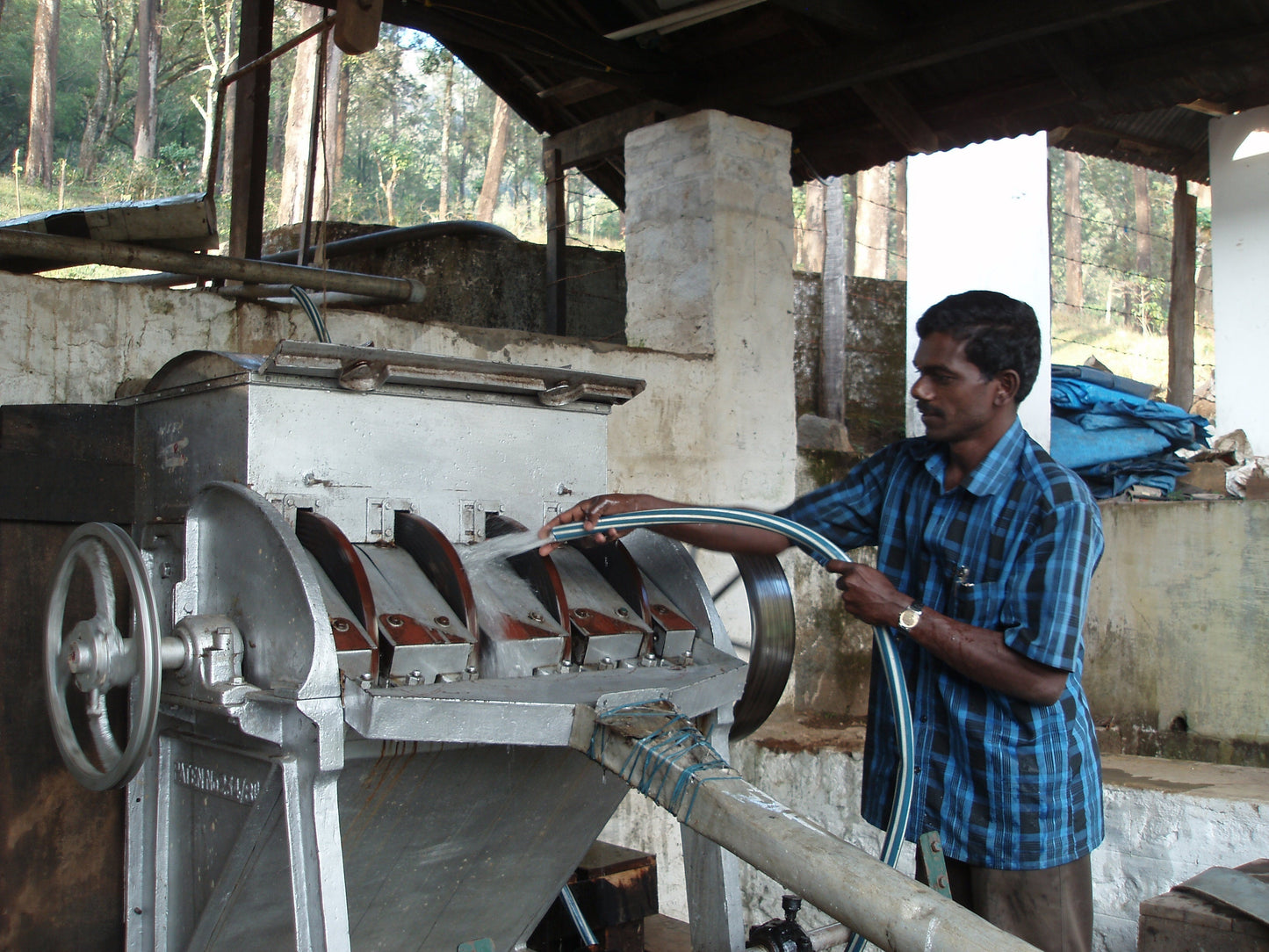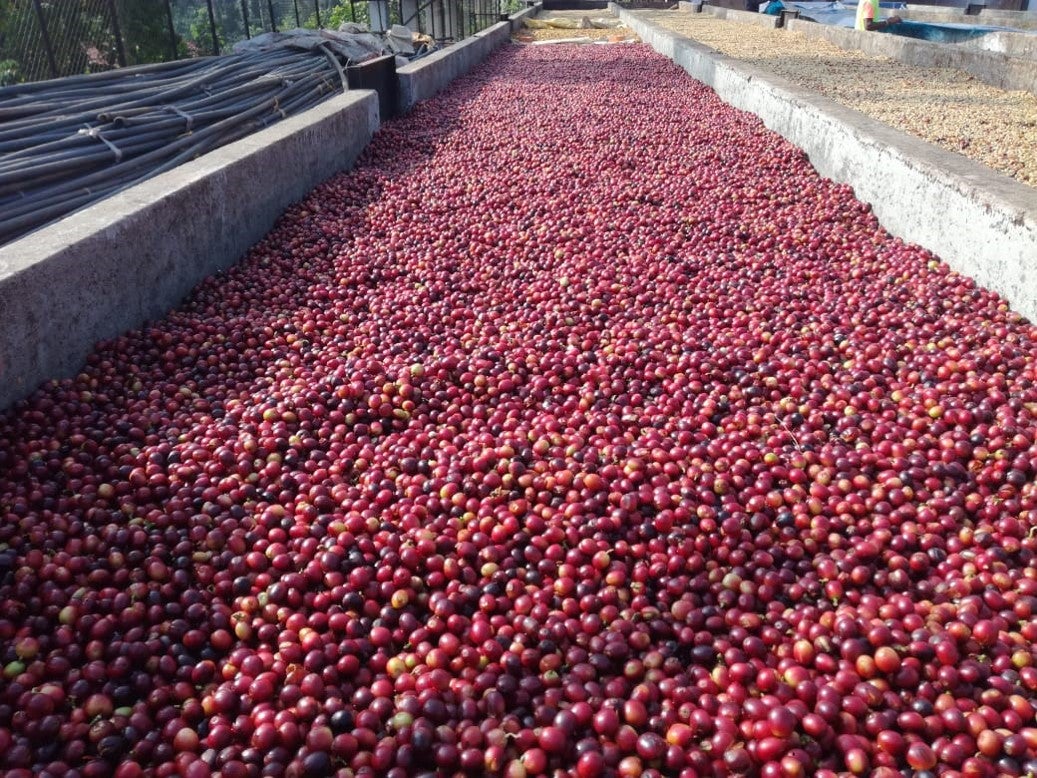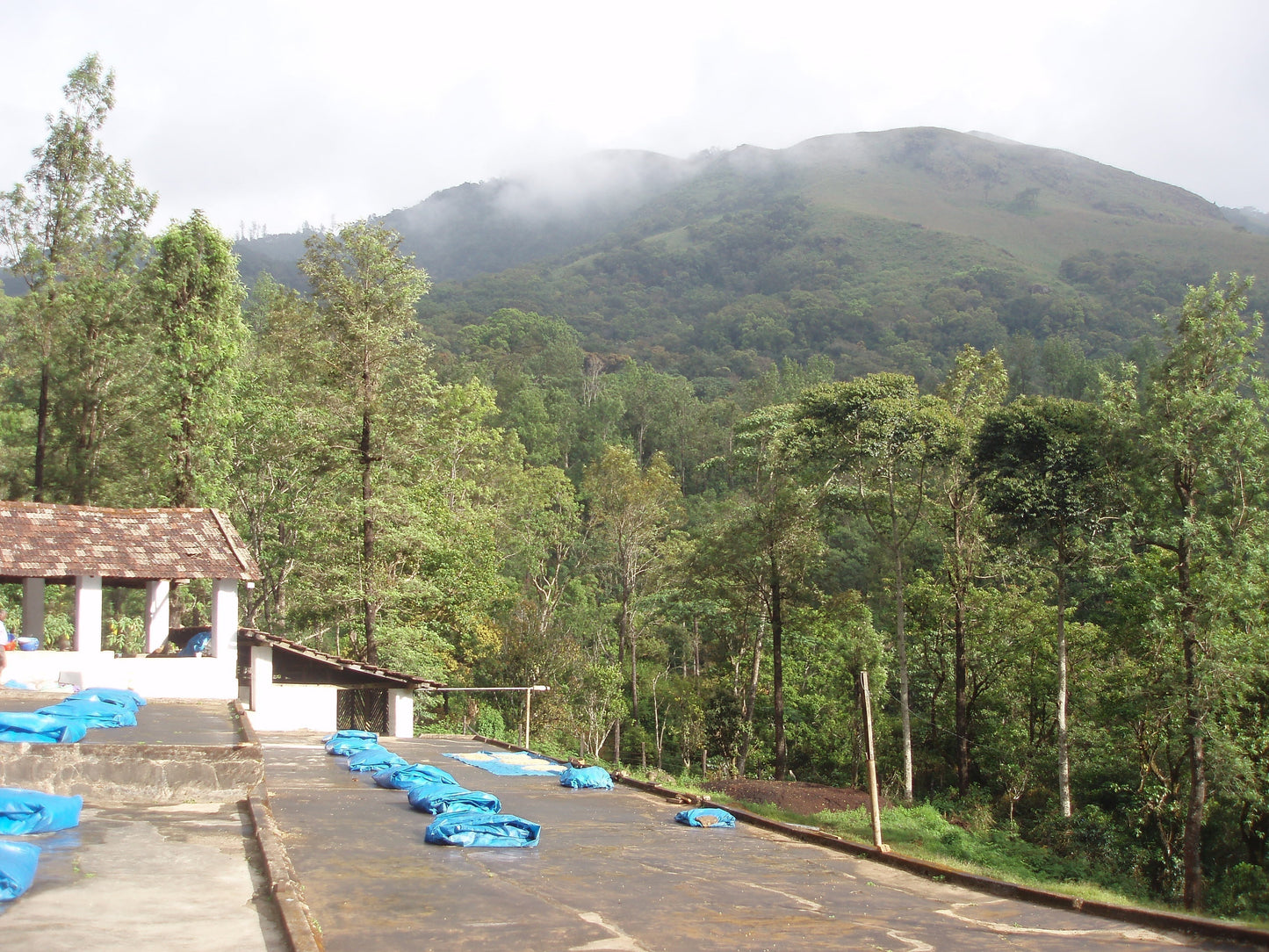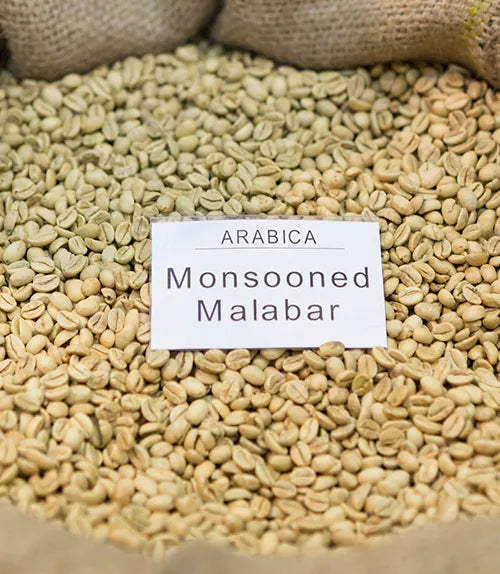?
?
?
?
?
?
?
?
?
Monsoon Malabar is best enjoyed well-rested from 14 to 25+ days past the roast date once the beans have fully stabilized. This extended resting period delivers a superb flavor balance that is largely absent in the first 10+ days post-roast.
If you prefer to order only once every 2-4 weeks I highly recommend when you order you get any of our other beans and pair it with Monsoon so you can drink fresh coffee in the "sweet spot" for over 2 weeks without your coffee going stale.
What is Monsoon Malabar?
Monsooned Malabar was extremely popular in Europe during the 19th and 20th centuries.
The flavors of Monsooned Malabar were originally unintentional and were simply a byproduct of transporting green coffee beans to Europe. The journey from India to Europe took approximately 6 months and the coffee, which sat in the hull of the ship, would absorb moisture from the sea and the humid winds. The moisture led the beans to swell to a larger size and turn a pale beige color. The taste of the coffee became smoother, softer and fuller.
Today, though shipping technology has advanced and now allows for the control of moisture in hulls, the demand for Monsooned Malabar remains, leading some producers to recreate the conditions of this particular coffee using special setups in their warehouses that take advantage of the monsoon winds.
Coffee in India
Though India is typically perceived as a tea-growing and drinking country, coffee production in the country actually predates tea. Records indicate that coffee first arrived in India in the 1600s, whereas tea did not arrive until more than 200 years later, in 1839. What does unite the two drinks, however, is that the British thirst for cheaper, more plentiful tea and coffee were the major reason that they were both first widely cultivated on plantations across India.
Coffee farms are typically situated between 700 and 1,200 meters above sea level. Most coffee cultivation is ‘traditional’ and two-tier shade canopies are mixed with leguminous, nitrogen-fixing trees. In this method, it is very common for coffee trees to be intercropped with spices (like vanilla or pepper) and fruit trees.
After harvest, which is most often done by hand by family members or hired laborers, cherry is usually processed as Natural or Fully washed. Most farms dry coffee on patios or tables, though some of the larger estates also have mechanical dryers.
Today, approximately 30% of coffee production is consumed internally. The other 70% is prepared for export.
#BBD0E0 »
SKU: monsoon_60g
Package Weight: 100g
How does my coffee come packaged?
Despite some of our product images looking very fancy our coffee is packaged into a plain brown paper foiled lined bag with a Swiss WIPF degassing valve. This offers superior oxygen and moisture protection. We recommend once you crack the seal you store your coffee in AirScape containers or Weber Workshop Bean Cellars for a single dosing option.
You can also freeze/vacuum seal in small lots, then use straight away once removed from freezer.
We don't have fancy printed bags with ziplocks (more plastic), we save that cost and buy better quality green beans so you can focus on your cup quality instead of fancy marketing and artwork.

